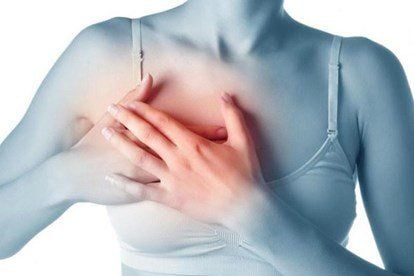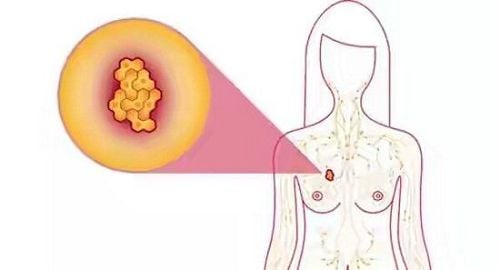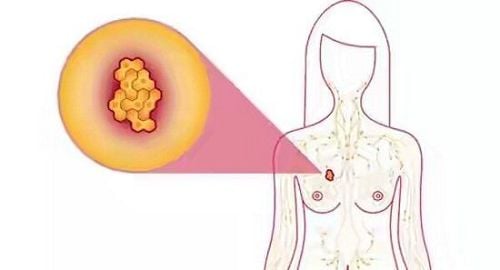This is an automatically translated article.
The article is professionally consulted by Master, Doctor Tran Ngoc Hai - Internal Oncologist - Internal Oncology Department - Vinmec Times City International Hospital. The doctor has extensive experience in the examination, diagnosis and treatment of cancers.Breast cancer is the leading cause of death in women. However, the detection of the disease is quite difficult because the warning signs of breast cancer are not the same. Besides, breast cancer after treatment has a high chance of recurrence. The disease can recur at any time, usually occurring in the first 5 years after breast cancer treatment.
1. How to check for breast cancer recurrence?
After undergoing breast cancer treatment, you should continue to check your breast lumps, the treated area, and the rest of your breast regularly. If you detect any changes, you need to immediately notify the treating doctor.Besides, you need to have regular mammograms. In some screening centers, three-dimensional mammograms are now available in addition to traditional digital mammograms. If genetic testing shows you have a BRCA mutation, you may also need a breast MRI.
If you have surgery to remove a breast lump, you will be given an x-ray of both breasts. If you've had a mastectomy, you'll only need to have another mammogram. The most important thing is that you should feel any changes in your breasts, breasts, or surrounding area after treatment even if you are having regular check-ups. Consult with your doctor to choose the best screening test method.
The recurrence of breast cancer can cause a number of changes such as:
The tumor thickens at the surgical site in the breast and armpit. Change in the size and shape of the breast. A new lump appears under the skin that feels hard to the touch. There is a change in the skin around the breast or nipple, such as wrinkled, scaly, red, or swollen skin. Blood or clear liquid coming out of the nipple. There is swelling in the chest, armpits or the area around the collarbone. The nipple is inverted or has a change in shape. Redness or rash on the skin around the nipple. Pain. Biceps are swollen. Along with a breast self-exam, detecting changes in the other breast or surrounding area, you need to report your condition to a medical professional. The doctors will help you with a thorough examination, examination and understanding of any symptoms and will perform testing if necessary. You should notify your doctor immediately when you have symptoms such as chest pain, headache, weight loss....

2. Causes of breast cancer recurrence
Some causes of breast cancer recurrence include:Tumor size: The larger the tumor, the higher the chance of recurrence. Cancer has spread: If your cancer has spread to your lymph nodes, the more lymph nodes that have cancer cells, the higher your risk of recurrence. Hormone receptors: About two-thirds of breast cancer patients have either estrogen or progesterone receptor hormones or both. HER2 Gene: This gene plays a role in triggering the growth of cancer cells. At the histological level, the more tumor cells that differ slightly from normal cells, the higher the recurrence rate.
Trắc nghiệm: Những lầm tưởng và sự thật về ung thư vú
Ung thư vú có tỷ lệ tử vong cao nhất ở nữ giới khiến họ rất lo sợ bản thân mắc phải căn bệnh này. Tuy nhiên, không ít chị em có những hiểu biết thái quá về ung thư vú. Thử sức cùng bài trắc nghiệm sau sẽ giúp bạn loại bỏ được những nghi ngờ không đúng về căn bệnh này.
Bài dịch từ: webmd.com
3. Treatment of recurrent breast cancer
Breast cancer can come back near the original site, but have not spread to other parts of the body. Local recurrence is treatable. Therefore, if you notice any changes around the original incision or around the chest area, you should immediately notify the treating doctor.Breast cancer that recurs and spreads to tissues and lymph nodes around the chest, neck, and below the breastbone. Some new cases of primary breast cancer can develop in the other breast.
Treatment of recurrent cancer depends on the initial treatment performed. If you have had a tumor removed, local recurrence is usually treated with surgical removal of the tumor.
In case, you have used hormone therapy, chemotherapy or radiation after surgery. Sometimes, your doctor will use a combination of the above methods.
If breast cancer is found in the other breast, it may be a new tumor unrelated to the first breast cancer. This will be treated as a new case of breast cancer. You will have a lumpectomy or mastectomy followed by other treatments if needed.
If the cancer has spread to another part of the body, such as the bones, lungs, liver, or brain, you may have surgery, chemotherapy, radiation, hormone therapy, targeted therapy, or a combination. . This also depends on your specific situation.
Doctors may recommend that women with high Her2-expressing cancer receive targeted therapy, or in combination with chemotherapy with certain medications.

Breast cancer is a disease causing high mortality in women, the disease can be cured if detected and treated in time. Besides, each woman must also protect her own health by self-examination and feeling for any changes in the breast and around the breast area.
Please dial HOTLINE for more information or register for an appointment HERE. Download MyVinmec app to make appointments faster and to manage your bookings easily.













